
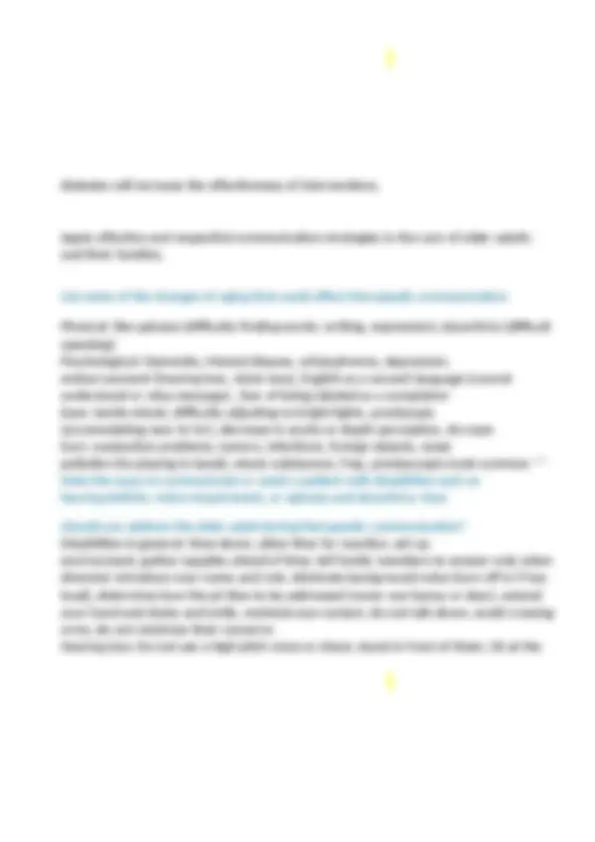
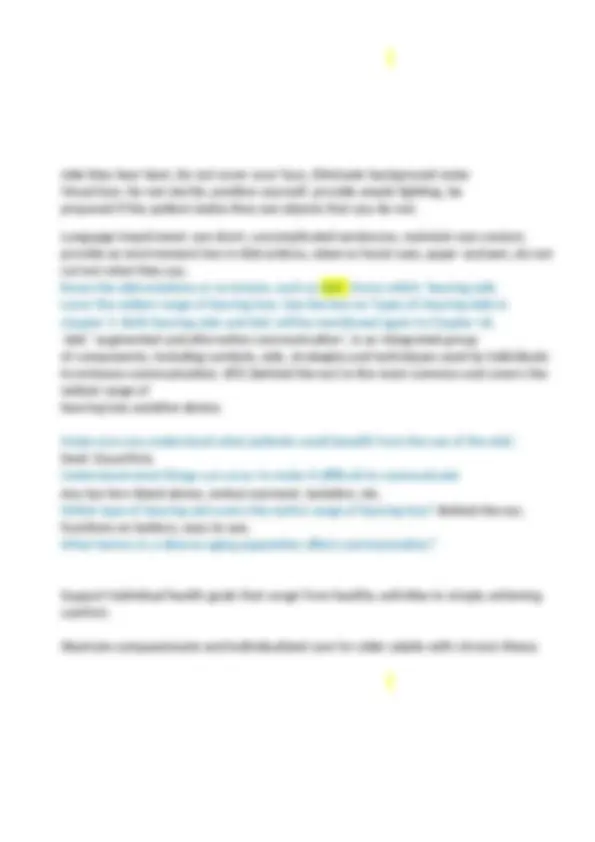
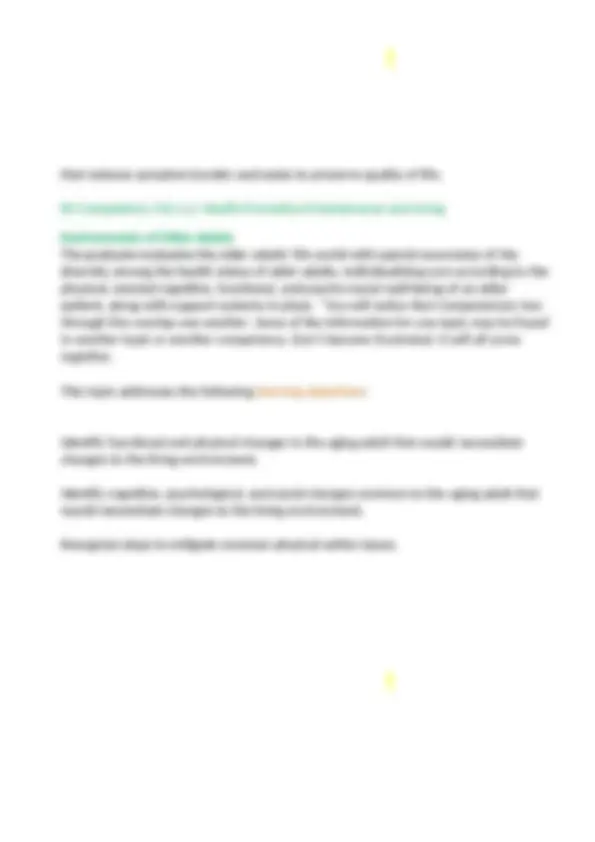

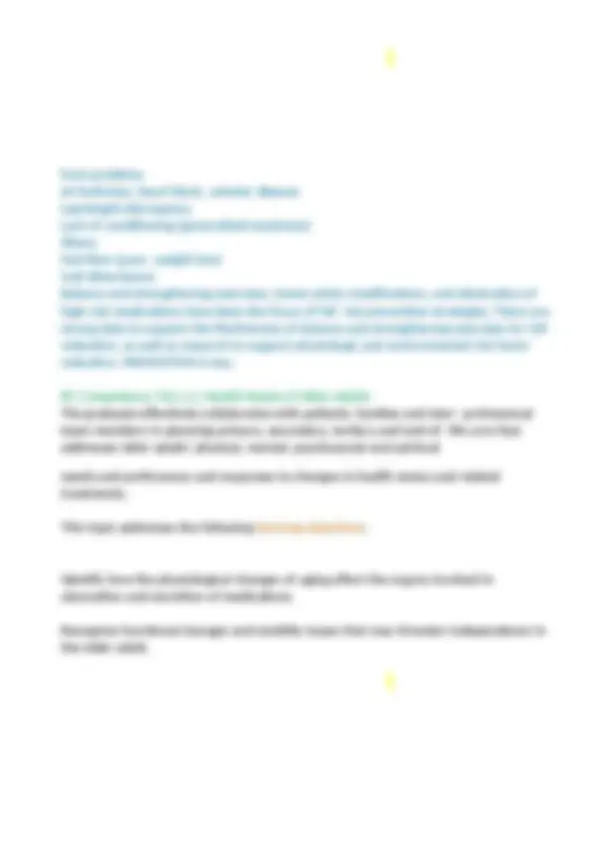
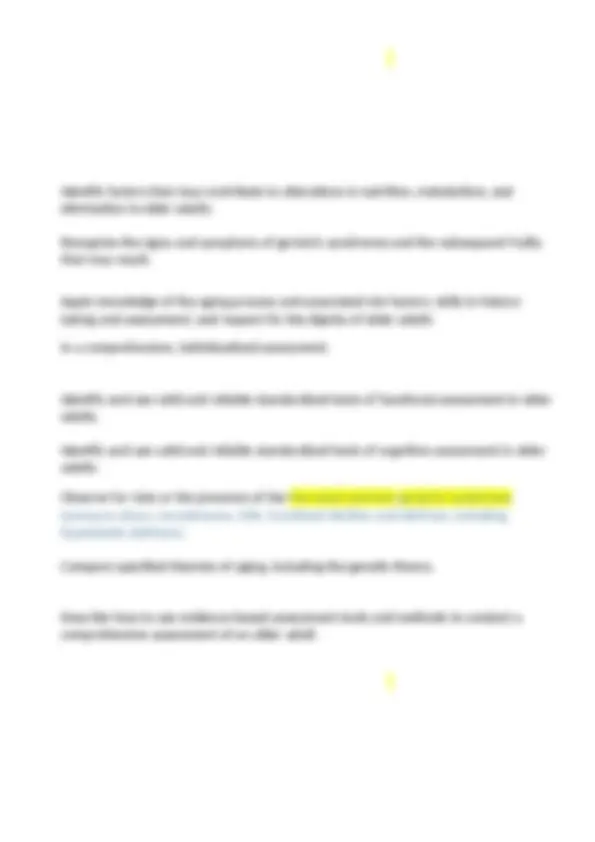

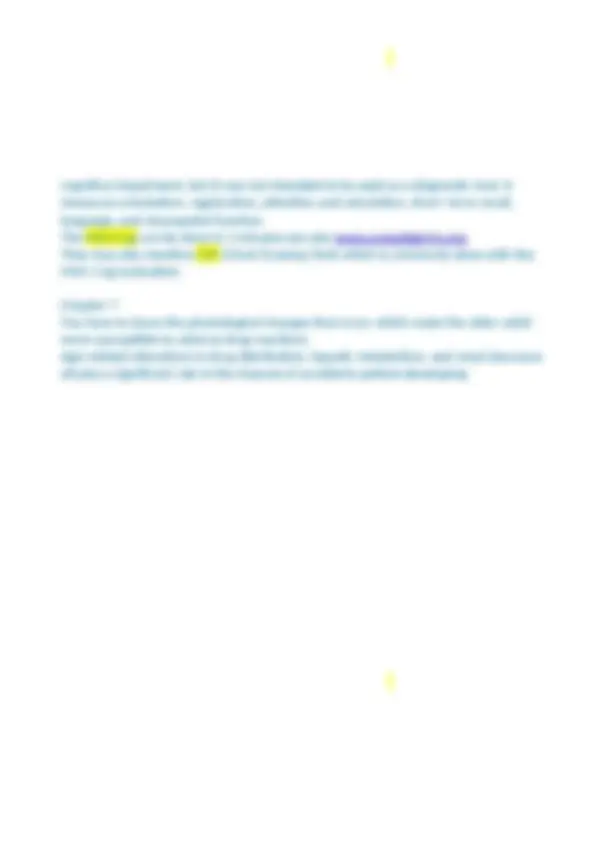

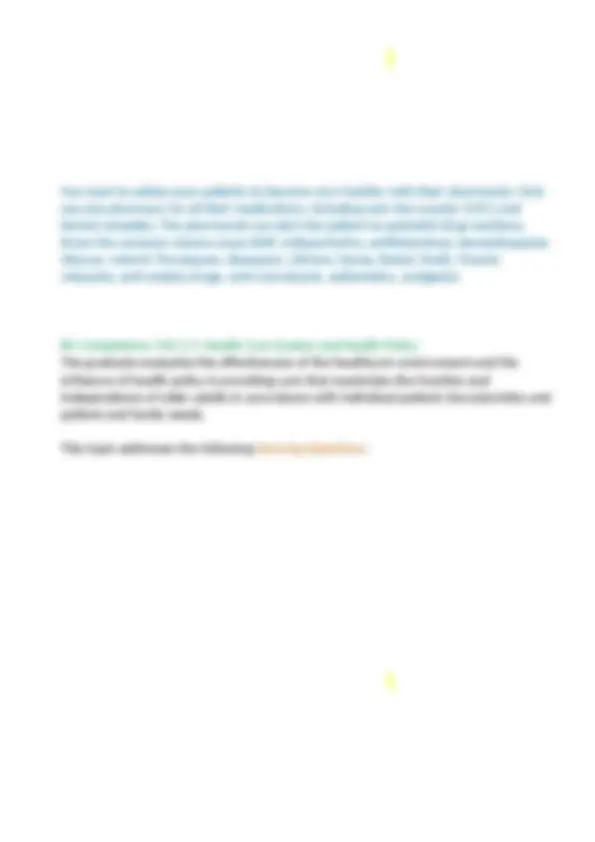
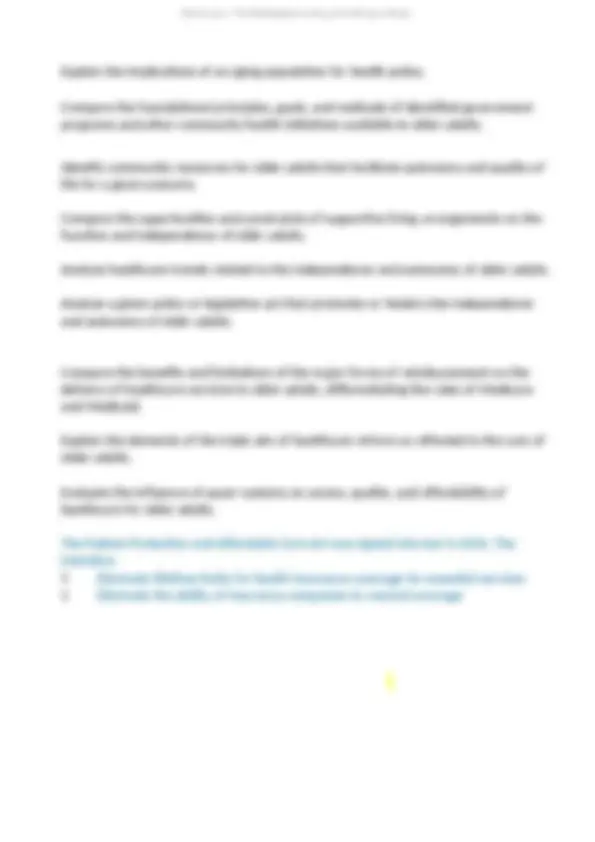
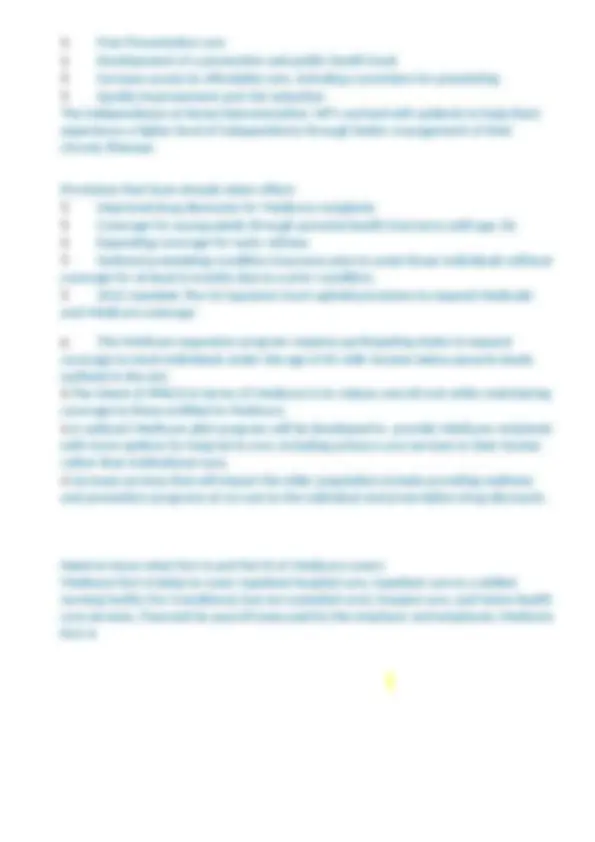

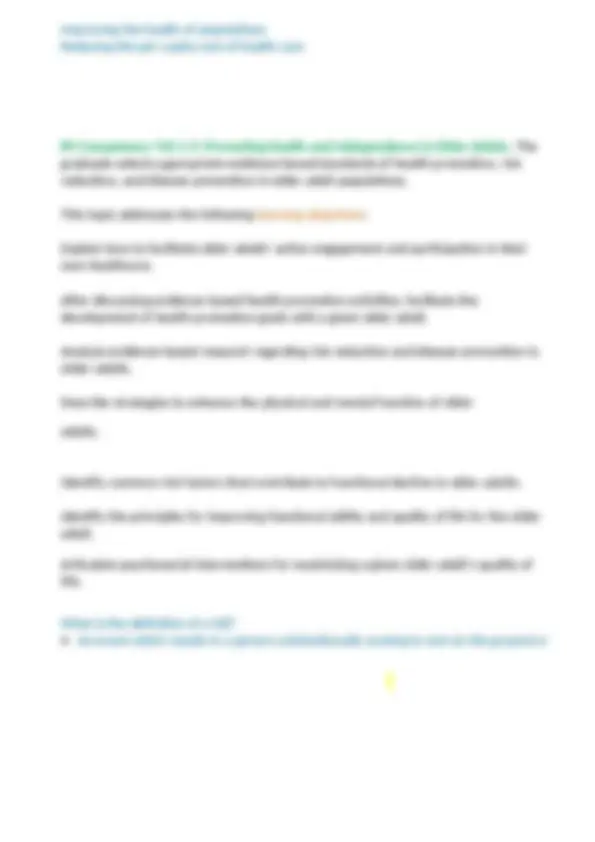





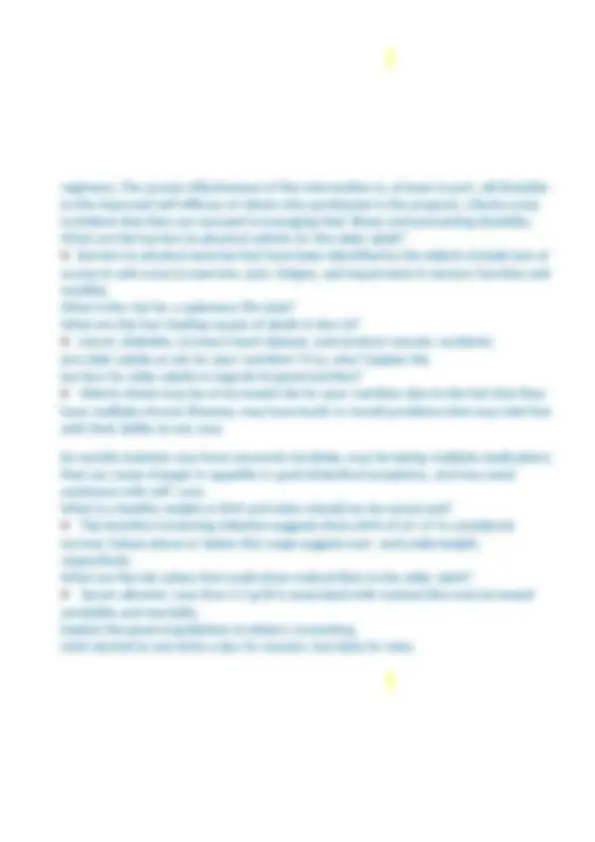
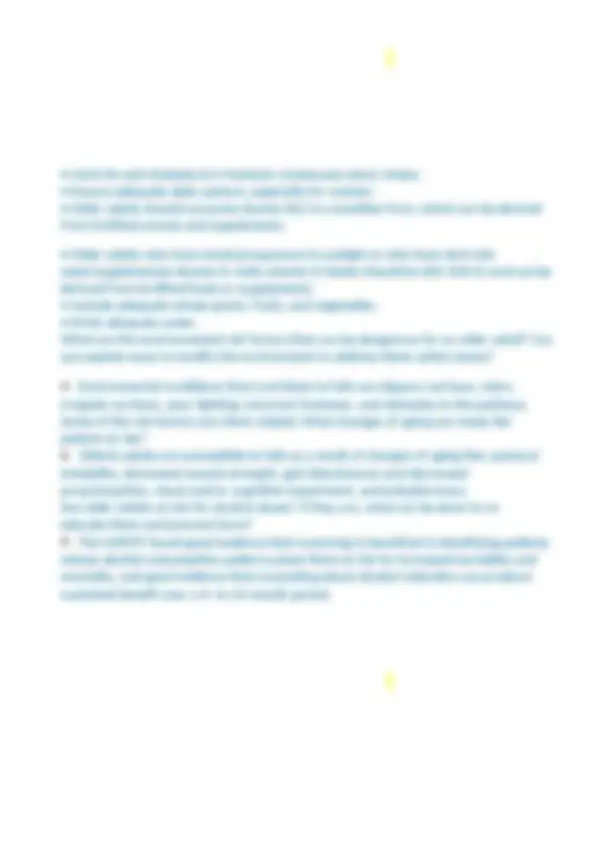

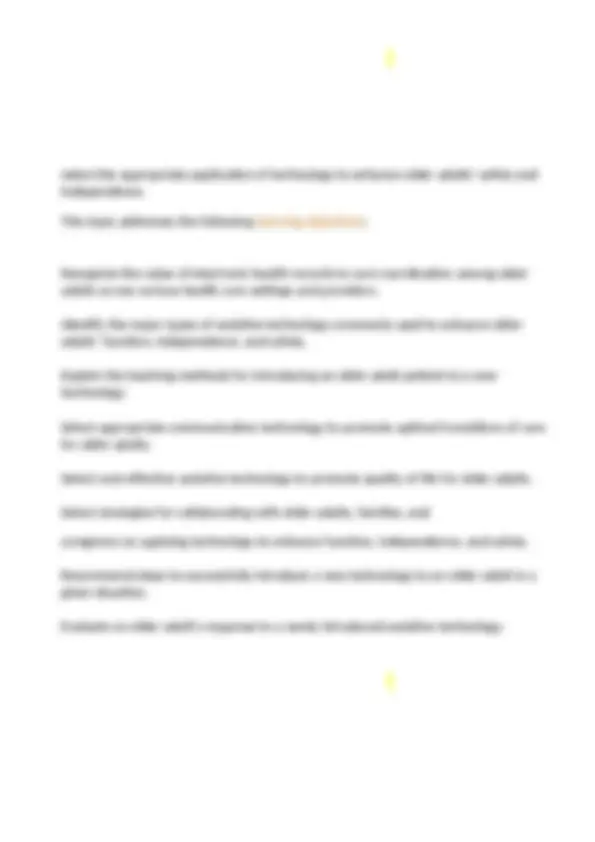

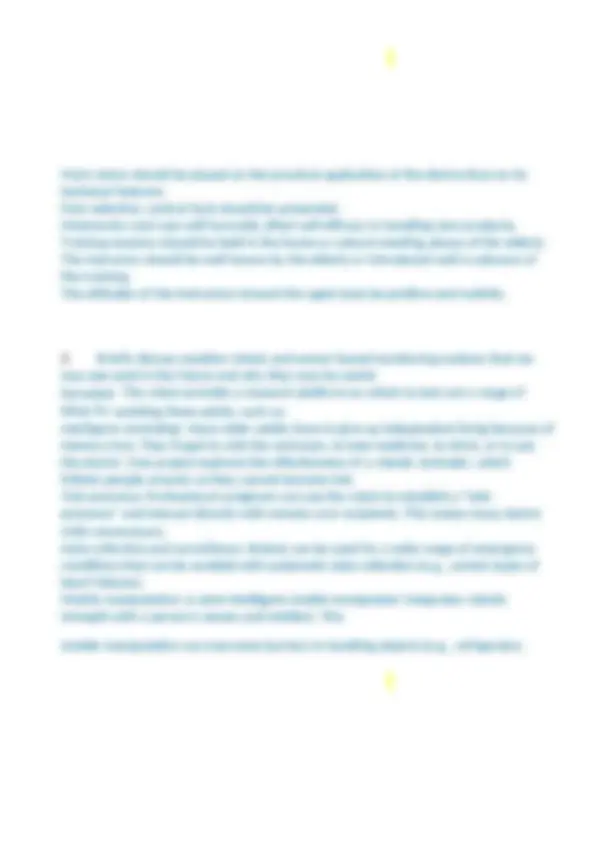
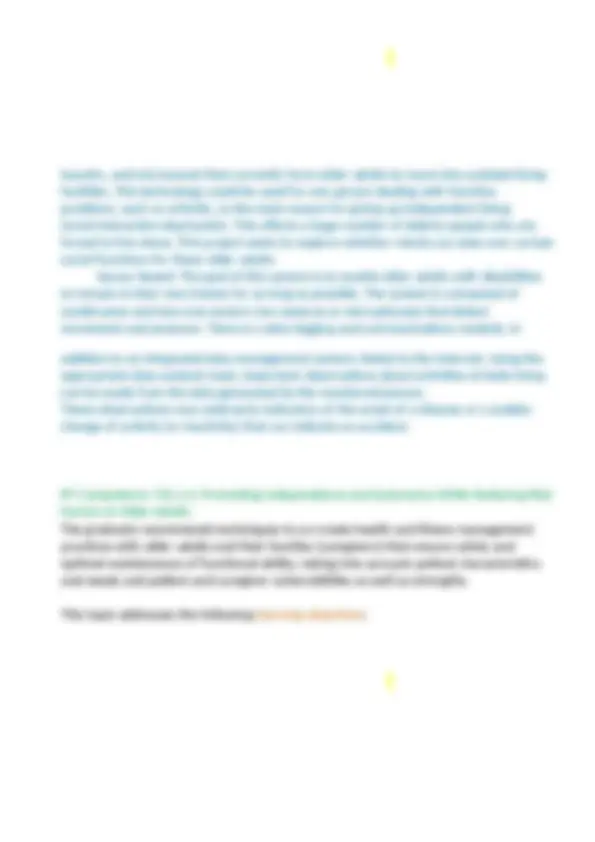
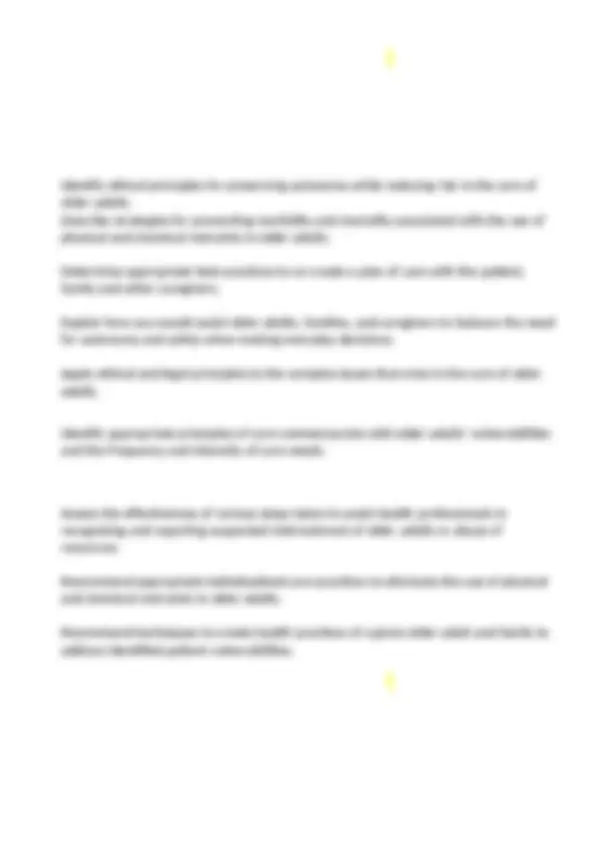





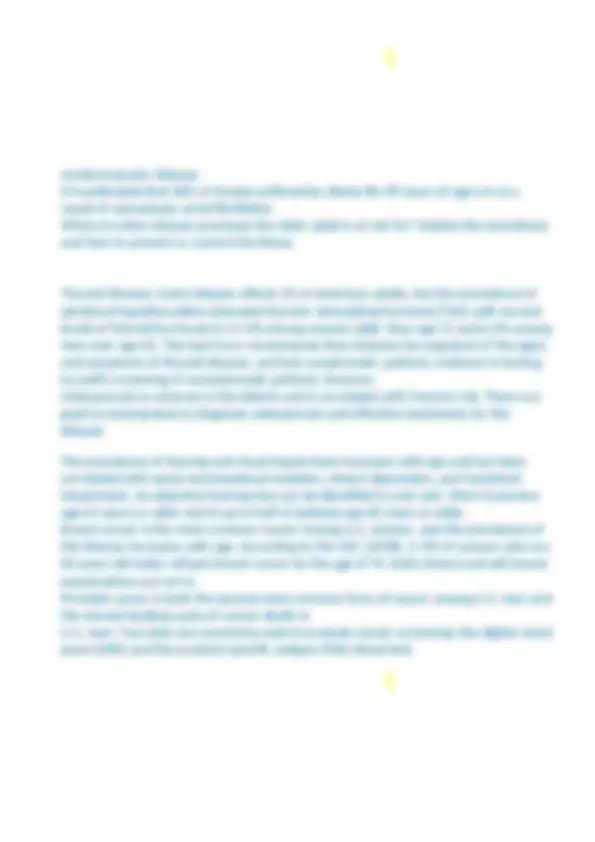
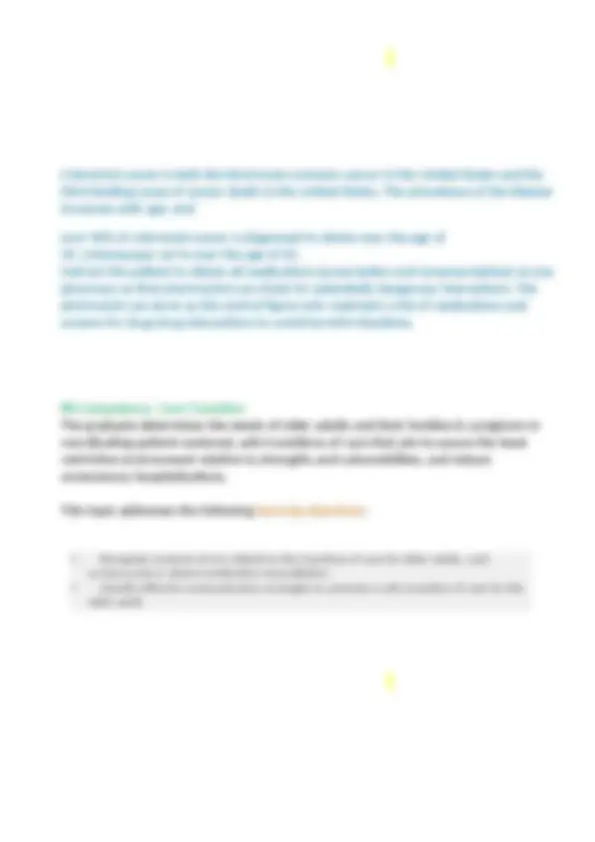
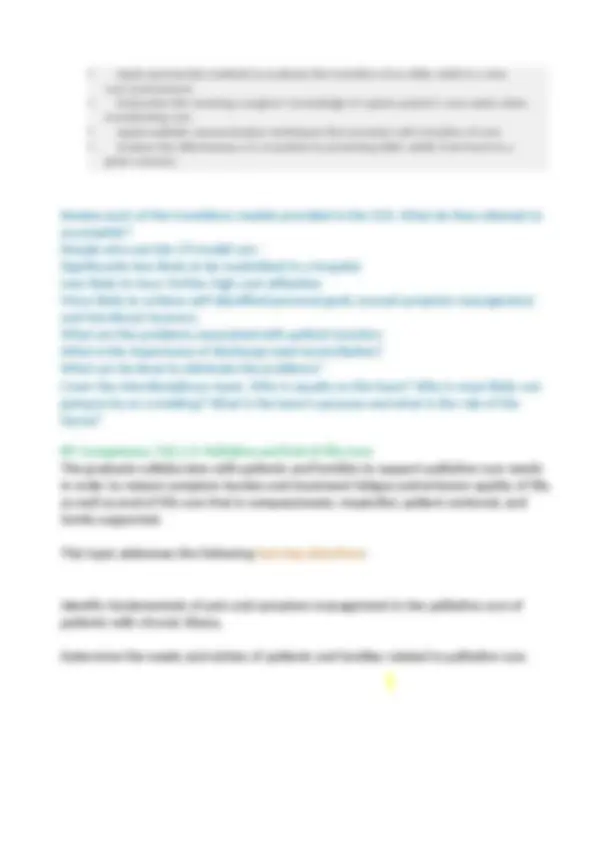
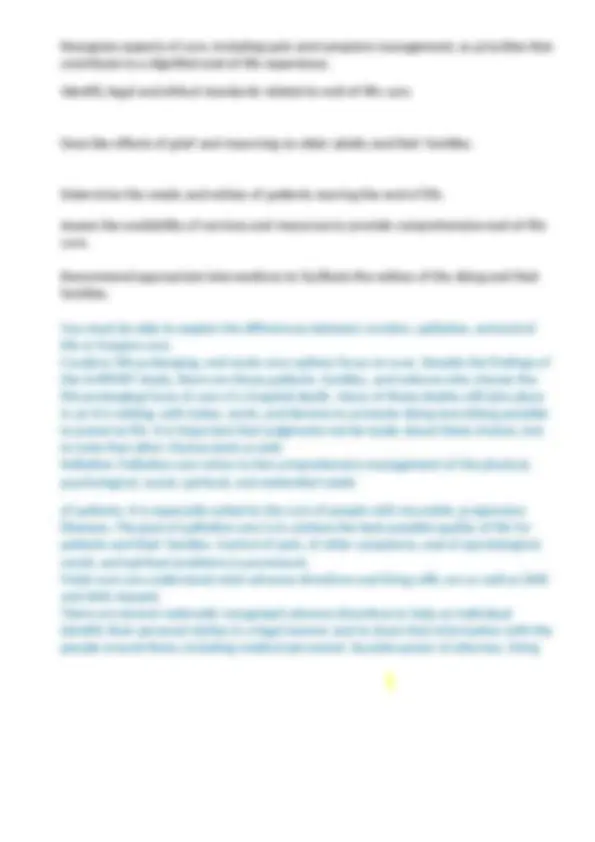




Study with the several resources on Docsity

Earn points by helping other students or get them with a premium plan


Prepare for your exams
Study with the several resources on Docsity

Earn points to download
Earn points by helping other students or get them with a premium plan
Community
Ask the community for help and clear up your study doubts
Discover the best universities in your country according to Docsity users
Free resources
Download our free guides on studying techniques, anxiety management strategies, and thesis advice from Docsity tutors
Physics A Level Questions with Answers For Anatomy Exam 1 Study Guide 2023-2024 Updates.
Typology: Study notes
1 / 46

This page cannot be seen from the preview
Don't miss anything!







































Exam questions are taken from the Learning Objectives under the 9 Competencies: #1 Competency 742.1.1: Compassionate and Respectful Care of Older Adults The graduate integrates principles of compassion and respect for patients and their families into the planning and delivery of care to a diverse population of older adults and into advocacy for vulnerable older adults. This topic addresses the following learning objectives: Recognize the impact of attitudes, values, and expectations about aging. Describe how the RN’s personal beliefs and values may impact the care of older adults. Articulate the concept of individualized care as the standard of practice with older adults, considering the right care, at the right time, in the right place and by the right provider of care.
Define Baby Boomers Those born between 1946-1964; that are now reaching retirement age What are the five racial groups listed in your text? European Americans, African Americans, Hispanic Americans, Asian Americans, and Native Americans How would you perform discharge teaching to an Hispanic patient Whittemore (2007) conducted a systematic review of the literature to identify culturally competent interventions for Hispanic adults with type 2 diabetes. In reviewing 11 studies, Whittemore found that providing educational sessions and written materials, in both English and Spanish; employing bilingual Hispanic staff; including family members in an informal atmosphere in health care encounters; incorporating cultural traditions in interventions; developing culturally relevant program literature; and providing fact sheets about risk and potential poor outcomes of chronic conditions such as
side they hear best, Do not cover your face, Eliminate background noise Visual loss: Do not startle, position yourself, provide ample lighting, be prepared if the patient states they see objects that you do not. Language impairment: use short, uncomplicated sentences, maintain eye contact, provide an environment low in distractions, observe facial cues, paper and pen, do not correct what they say. Know the abbreviations or acronyms, such as AAC. Know which hearing aids cover the widest range of hearing loss. See the box on Types of Hearing Aids in chapter 5. Both hearing aids and AAC will be mentioned again in Chapter 16.
that reduces symptom burden and seeks to preserve quality of life. #2 Competency 742.1.2: Health Promotion/Maintenance and Living Environments of Older Adults The graduate evaluates the older adults' life world with special awareness of the diversity among the health status of older adults, individualizing care according to the physical, mental/cognitive, functional, and psycho-social well-being of an elder patient, along with support systems in place. * You will notice that Competencies two through five overlap one another. Some of the information for one topic may be found in another topic or another competency. Don’t become frustrated. It will all come together. This topic addresses the following learning objectives: Identify functional and physical changes in the aging adult that would necessitate changes to the living environment. Identify cognitive, psychological, and social changes common to the aging adult that would necessitate changes to the living environment. Recognize steps to mitigate common physical safety issues.
member, and reasons for the abuse include caregiver burnout and stress, financial worries, transgenerational violence, and psychopathology in the abuser. Women and dependent elders tend to be the most vulnerable to abuse. What 5 areas do Healthy People 2010 and the USPSTF suggest that nurses focus on to promote health & prevent disability in the older adult? (see page 356 in text) Physical activity Nutrition Tobacco use Safety Immunization Describe the difference between ADLs and IADLs (instrumental activities of daily living) ADL: Include bathing, dressing, grooming, showering, and toileting activities. IADL: Activities related to independent living; they include meal preparation, money management, shopping, housework, and using a telephone. Tools of ADL/IADL can be used to determine functional ability of a pt and how much they need to depend on others to live alone or with some assistance. List the nutritional assessment tests to determine risk for diet-related chronic illness (see text page 359) DETERMINE Your Nutritional Health Checklist: A tool created by the Nutrition Screening Initiative, a collaborative project of health, medical, and aging organizations. The nutrition checklist can be ordered from the initiative’s Web site for a nominal fee.
additional assessment. Obesity is a problem for many older Americans, just as it is for younger adults. The Obesity Education Initiative of the National Heart, Lung, and Blood Institute (2005) has provider guidelines and patient education materials
Identify factors that may contribute to alterations in nutrition, metabolism, and elimination in older adults. Recognize the signs and symptoms of geriatric syndromes and the subsequent frailty that may result. Apply knowledge of the aging process and associated risk factors; skills in history- taking and assessment; and respect for the dignity of older adults in a comprehensive, individualized assessment. Identify and use valid and reliable standardized tools of functional assessment in older adults. Identify and use valid and reliable standardized tools of cognitive assessment in older adults. Observe for risks or the presence of the five most common geriatric syndromes (pressure ulcers, incontinence, falls, functional decline, and delirium, including hypokinetic delirium). Compare specified theories of aging, including the genetic theory. Describe how to use evidence-based assessment tools and methods to conduct a comprehensive assessment of an older adult.
Promote quality outcomes through the application of evidence-based practices specific to the care needs of older adults. Promote evidence-based practice by utilizing the Beer list of potentially unsafe medications for the elderly. Contribute to interdisciplinary plans of care to promote health, reduce risk, and prevent disease in older adults. Contribute to interdisciplinary care plans that address common acute and chronic health conditions, such as arthritis, diabetes, cardiovascular diseases that may lead to congestive heart failure, and dementia. Consider potential drug side effects in assessing adverse symptoms in older adults. There are three types of assessments: Physical, Cognitive and Functional. Physical assessmen t is assessing the patient’s physical health. It included vital signs, assessing for pain, blood pressure problems, irregular heartbeat, abnormal breath sounds, etc. you know these because as a nurse you are always assessing the patient. In addition, for older adults you want to assess cognitive function. Functional assessment is assessing what the older adult can still for themselves. Bathing, eating, getting dress, brushing their teeth and more are functional abilities. Functional abilities can be altered due to physical impairment and illness. Dr. Katz and Dr. Barthel developed ADL/IADL indexes to measure the patients functional abilities. You should have noticed that ADL is used throughout the book. This is because the ADL's can determine the patient's care plan. It determines whether they are safe in the current environment. It impacts their ability to participate in health promotion and disease
prolonged hospitalization. Know Katz Index of ADL and Barthel Index both are in chapter 7. You will see ADL and IADL throughout the rest of the entire book. Katz: distinguished between independence and dependence in activities and created an ordered relationship among ADLs. It addressed the need for assistance in bathing, eating, dressing, transfer, toileting, and continence. Uses a scoring 0 for dependent and 1 for independent and helps with discharge and POC. Barthel: This index was designed to measure functional levels of self- care and mobility, and it rates the ability to feed and groom oneself, bathe, go to the toilet, walk (or propel a wheelchair), climb stairs, and control bowel and bladder The Mini Mental State Examination (MMSE) is the most extensively used cognitive assessment tool (page 246): The MMSE was originally developed to differentiate organic from functional disorders and to measure change in
cognitive impairment, but it was not intended to be used as a diagnostic tool. It measures orientation, registration, attention and calculation, short- term recall, language, and visuospatial function. The Mini-Cog can be done in 5 minutes see also www.consultgerirn.org. They may also mention CDT (Clock Drawing Test) which is commonly done with the Mini- Cog evaluation. Chapter 7 You have to know the physiological changes that occur which make the older adult more susceptible to adverse drug reactions. Age-related alterations in drug distribution, hepatic metabolism, and renal clearance all play a significant role in the chances of an elderly patient developing
taking a medication and may take an OTC that will have the same effect. Beers’ List of Inappropriate drugs for Older Adults- this is in the e-text and www.consultgerirn.org. Make sure you are familiar with this. Benzodiazepines are mentioned quite a bit. Questions to Ask to Avoid Inappropriate Prescribing for Elderly Patients: Is the treatment necessary? Is this the safest drug available? Is this the most appropriate dose, route of administration, and dosage form? Is the frequency appropriate? Do the benefits outweigh this risk? Meds: Darvon, Darvocet Benedryl Antichol’s (Amitryptline) Demerol
Barbituates, Benzo’s Nifedipine (Procardia) Clonidine Flexeril, oxybutynin Dipyrmainole Indocin MAP - this means medication assistance program and it will be mentioned in a later chapter. Make sure you understand what it is. This is a choice you can offer your patient who cannot pay for their medication.
Stuvia.com - The Marketplace to Buy and Sell your Study Material Explain the implications of an aging population for health policy. Compare the foundational principles, goals, and methods of identified government programs and other community health initiatives available to older adults. Identify community resources for older adults that facilitate autonomy and quality of life for a given scenario. Compare the opportunities and constraints of supportive living arrangements on the function and independence of older adults. Analyze healthcare trends related to the independence and autonomy of older adults. Analyze a given policy or legislative act that promotes or hinders the independence and autonomy of older adults. Compare the benefits and limitations of the major forms of reimbursement on the delivery of healthcare services to older adults, differentiating the roles of Medicare and Medicaid. Explain the elements of the triple aim of healthcare reform as reflected in the care of older adults. Evaluate the influence of payer systems on access, quality, and affordability of healthcare for older adults. The Patient Protection and Affordable Care Act was signed into law in 2010. The intention: (^1) Eliminate lifetime limits for health insurance coverage for essential services 1 Eliminate the ability of insurance companies to rescind coverage
1 Free Preventative care 1 Development of a prevention and public health fund. (^1) Increase access to affordable care, including a provision for preexisting (^1) Quality improvement and risk reduction The Independence at Home Demonstration: NP’s worked with patients to help them experience a higher level of independence through better management of their chronic illnesses Provisions that have already taken effect: (^1) Improved drug discounts for Medicare recipients (^1) Coverage for young adults through parental health insurance until age 26. 1 Expanding coverage for early retirees (^1) National preexisting-condition insurance plan to assist those individuals without coverage for at least 6 months due to a prior condition. (^1) 2012 mandate The US Supreme Court upheld provisions to expand Medicaid and Medicare coverage a The Medicare expansion program requires participating states to expand coverage to most individuals under the age of 65 with income below poverty levels outlined in the Act. 1 The intent of PPACA in terms of Medicare is to reduce overall cost while maintaining coverage to those entitled to Medicare. 1 A national Medicare pilot program will be developed to provide Medicare recipients with more options for long-term care, including primary care services in their homes rather than institutional care. 1 Increase services that will impact the older population include providing wellness and prevention programs at no cost to the individual and prescription drug discounts. Need to know what Part A and Part B of Medicare covers Medicare Part A helps to cover inpatient hospital care, inpatient care in a skilled nursing facility (for transitional, but not custodial care), hospice care, and home health care services. Financed by payroll taxes paid by the employer and employee, Medicare Part A